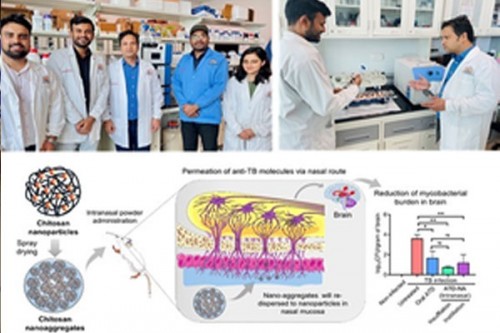New nasal drug delivery method can reduce TB bacteria in brain by 1,000x

New Delhi, Oct 17 (IANS) In a first, scientists at the Institute of Nano Science and Technology (INST), Mohali, an autonomous institute of the Department of Science and Technology (DST) have developed a unique way through the nose to deliver tuberculosis (TB) medicines directly to the brain.
TB that affects the brain is called Central Nervous System Tuberculosis (CNS-TB) and is one of the most dangerous forms of TB, often leading to severe complications or death.
The novel nose-to-brain (N2B) drug delivery utilises the olfactory and trigeminal nerve pathways in the nasal cavity and effectively bypasses the challenging blood-brain barrier (BBB).
While traditional treatments involve high doses of oral anti-TB drugs, they often fail to achieve effective concentrations in the cerebrospinal fluid as the BBB limits the medicines from entering the brain.
To counter this, the INST team used nanoparticles made of a natural material called chitosan, which bypassed the BBB and delivered TB medicines directly to the brain via the nose. Chitosan is a biocompatible and biodegradable material.
The chitosan nano-aggregates could hold TB drugs like isoniazid (INH) and rifampicin (RIF). Importantly, chitosan -- known for its mucoadhesive properties -- sticks to the nasal mucosa, which helps the nano-aggregates stay in place and prolongs the time they can release the drug, enhancing its therapeutic effectiveness.
“In mice infected with TB, the nasal delivery of these nano-aggregates reduced the number of bacteria in the brain by nearly 1,000 times more than in untreated mice,” said the team in the paper, published in the journal Nanoscale (Royal Society of Chemistry).
The new treatment method also helps reduce the inflammation caused by the infection, an advance that has the potential to greatly improve treatment for people suffering from brain TB and could help in faster recovery.
According to scientists, the novel method could be applied to treat other brain infections, neurodegenerative diseases like Alzheimer’s and Parkinson’s, brain tumours, and epilepsy by enabling efficient drug delivery to the brain.

|

|

